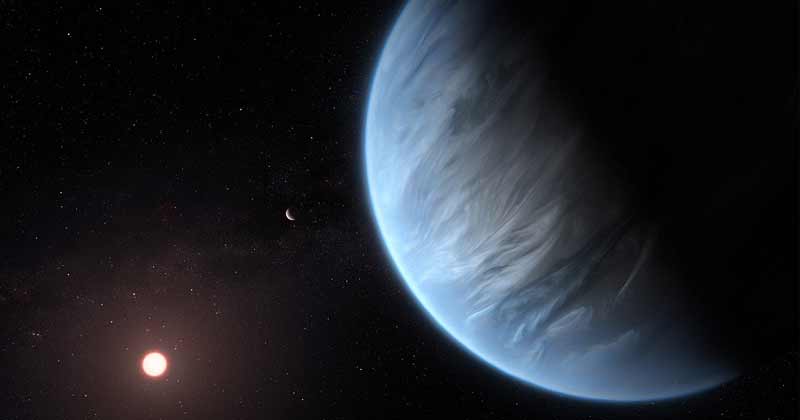A discovery that marks a milestone in finding signs of life outside of our solar system: Astronomers have discovered for the first time water vapor in the atmosphere of a distant planet K2-18b orbiting its star in the so-called habitable zone.

The finding of water in a potentially habitable world is incredibly exciting because it not only offers a habitable planet for future human travels but opens the possibilities for the existence of a life form.
However, the discovery does not mean that there actually is life on the 110 light-years distant exoplanet K2-18b, reports the journal Nature Astronomy on Wednesday.

Of course, the distant planet could become the best candidate for the search for signs of extraterrestrial life.
Observations with the Hubble Space Telescope have enabled scientists to discover that the planet has an atmosphere and contains water vapor – two good news if you’re interested in the planet’s habitability and the possible existence of alien life.

The exoplanet K2-18b was discovered in 2015 by the US Space Telescope Kepler. It circles the sun K2-18, a red dwarf star in the constellation Leo, in the so-called Goldilocks zone or the habitable zone – so at a distance from its sun, which could allow the permanent existence of liquid water on its surface. K2-18b probably consists of silicates like Earth, Mars, and Venus as well as ice.


